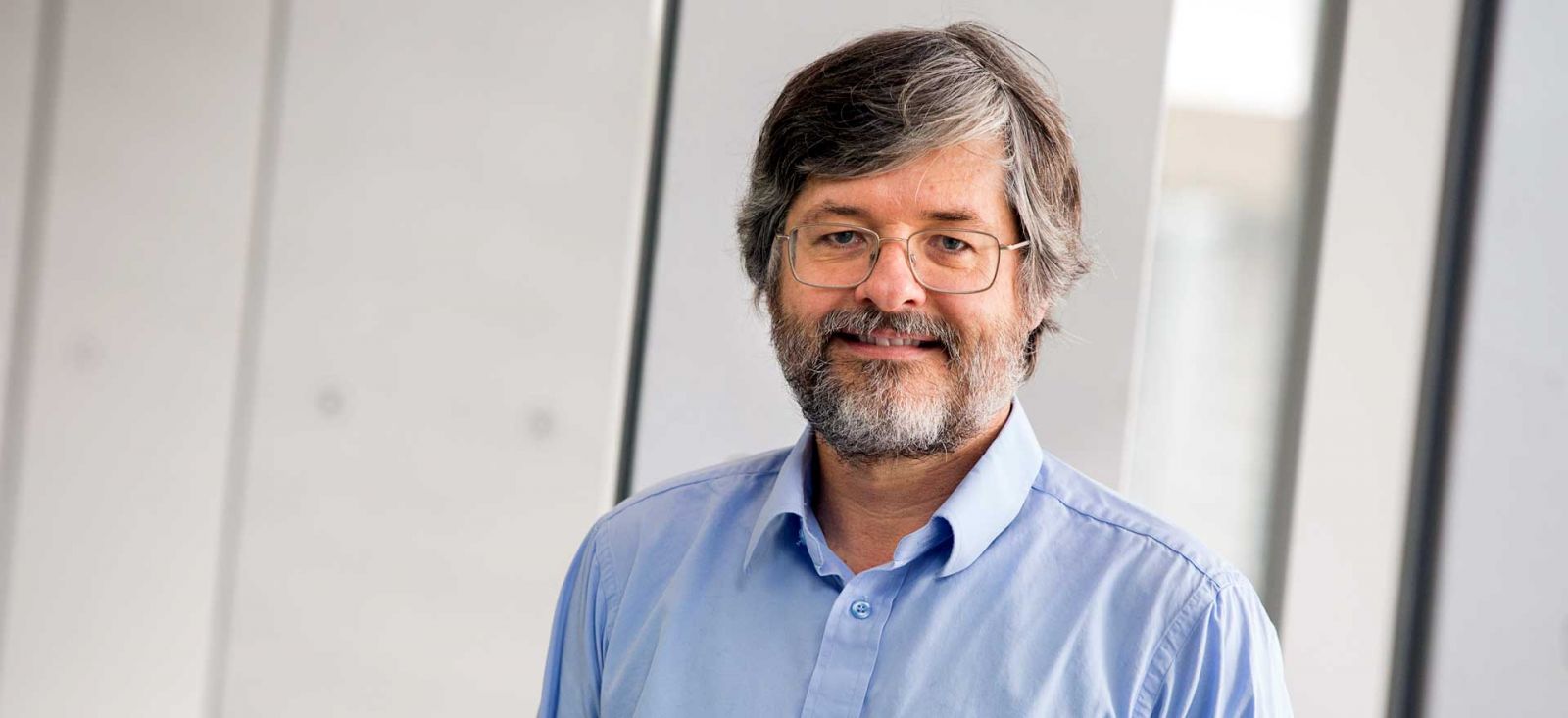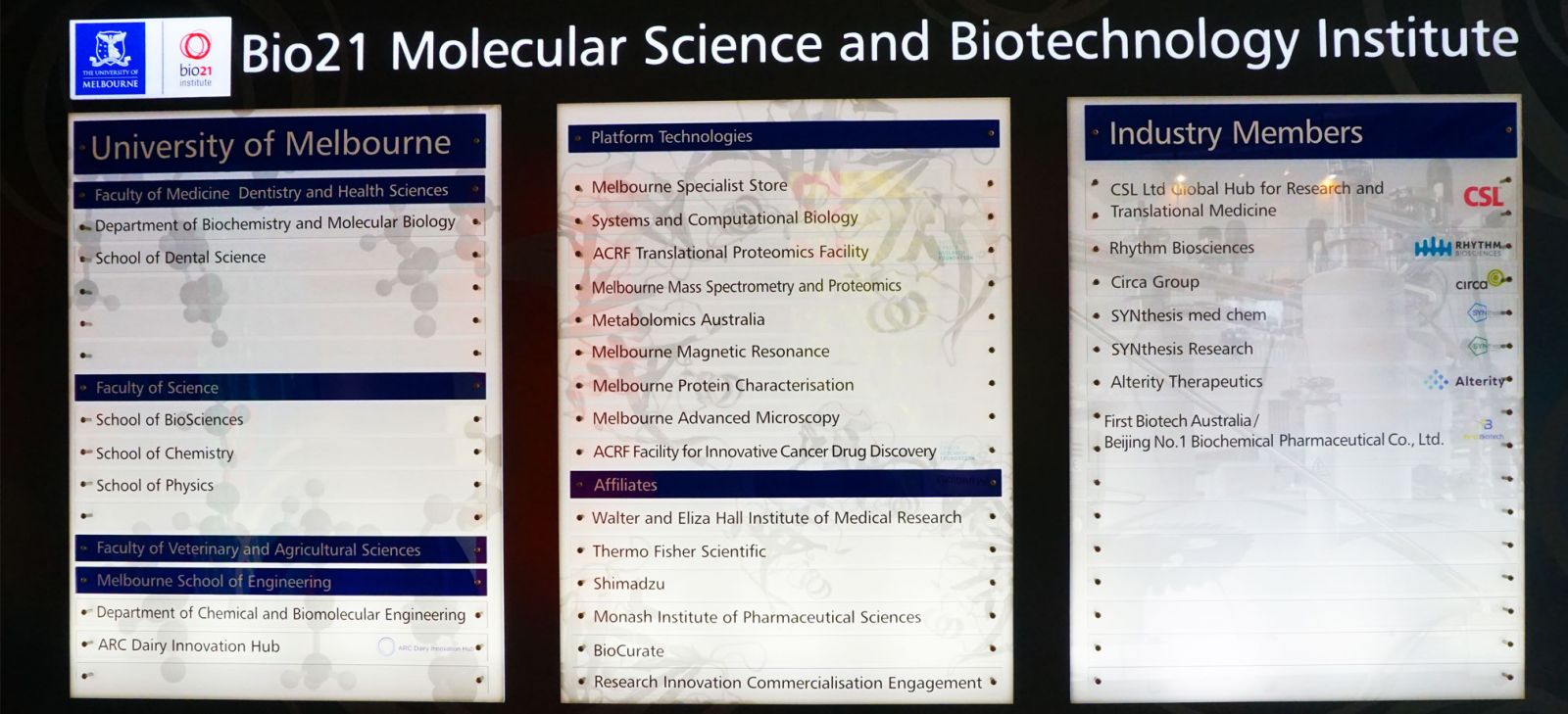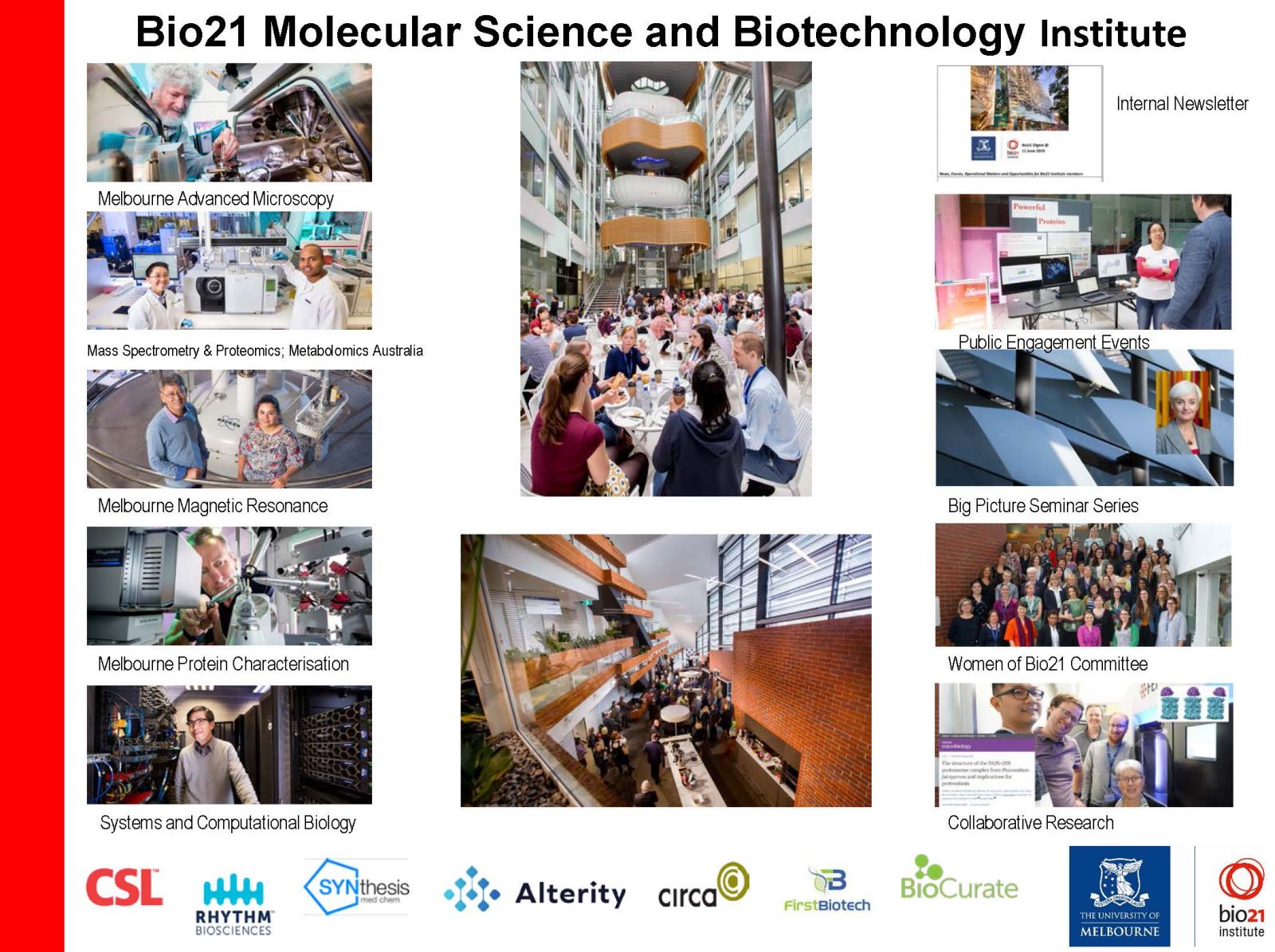Director's Blog - 23 August 2019 - How collaborative culture fuels research success

Last week as part of the Faculty of Science’s ‘Science Festival’, I was invited to participate in a panel discussion: ‘Different perspectives, one solution. How can we cross the divide between the physical and life sciences, engineering and the humanities?’ The event showcased some wonderful examples of multidisciplinary and interdisciplinary research.
I was permitted to submit one PowerPoint slide only and asked to respond to the question: ‘How does the Bio21 Institute bring different disciplines together?’ Capturing the complexity of Bio21 in just one slide is a near-impossible task, so I snuck in a 2 in 1 slide (using an animation trick): firstly, I included an image of our directory from our entrance foyer, as it lists and categorises all the groups within the building; academic (from 3 STEMM faculties), industry (7 industry groups) and platform technology facilities and so highlights our many different disciplines within the Institute.

But a list does not tell you how we bring people together across disciplines – what is the glue? As a Director of an Institute, I cannot force people to interact, but I can seek to provide the environment and to foster the culture that encourages people and groups from different disciplines and between academia and industry to engage with each other and to feel like they belong to Bio21. This I attempted to express in my next slide:

Tools: On the left hand panel you see the images of our platform technology facilities. These facilities represent one kind of ‘glue’ within the Institute, attracting researchers from various disciplines, who wish to use our tools to verify, visualise and locate molecules in order to address a diverse range of research questions.
Shared Spaces: The centre panels show our Bio21 atrium in the David Penington Building, but also the new common area, Level 2 of the Nancy Millis building. Along with other spaces, including our auditorium, balconies and the Avist café, these meeting, ‘break-out’ and gathering spaces, are important elements of the building design. In order to bring people together, we need spaces and places to meet, listen, learn, connect and talk. These spaces – beyond our laboratories – create opportunities for serendipitous encounters that may lead to conversations, collaborations and possibly friendships that occurred at the right time and place. Also, once the Stage2C project is finished, we will have access to outdoor spaces in the summer.
Events: A good party; fine food and drink (e.g. coffee), as well as the opportunity to hear the news of the day, have always drawn people together. So too, through our regular morning teas, ‘Big Picture’ seminars and also our International Women’s Day celebration in March this year, members of our community from across the Institute regularly have the opportunity to gather and meet and to learn about each other’s work.
Projects: Finally, we are brought together by our need to solve a problem and our realisation that we cannot do this on our own. We need the specialised knowledge and skills of others to bring in different perspectives to solve our research problem. A good example of this is the recent Nature Microbiology paper led by the Tilley and Griffin groups. The problem of understanding how the malaria parasite proteasome works has brought many researchers together and the resulting list of authors spans research and platform facility groups from within the Institute, bringing in expertise in malaria, cryo-EM, X-ray crystallography and computational biology. This paper is just one of many such publications that result from collaborations from within the Institute.
It is our successful recipe – through tools, shared spaces, events and projects – that sets Bio21 apart and gives us the edge in many research projects and grant applications. It exemplifies how collaborative culture fuels research success. And, as new research institutions are being conceptualised, ours is a model that many seek to replicate.
Professor Michael Parker
Director, Bio21 Institute

